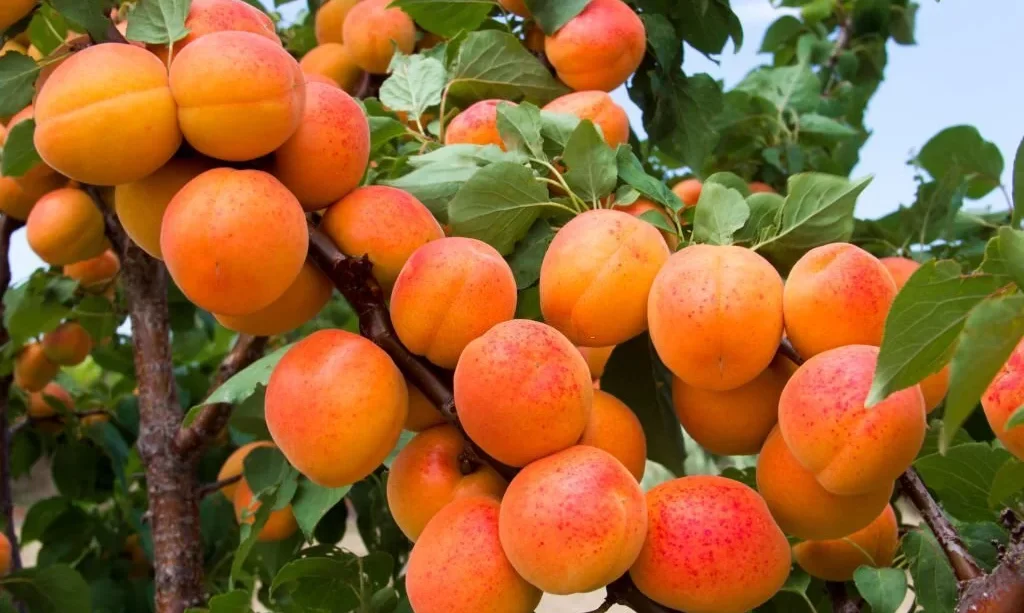Apricots, with their sweet and tangy flavor, have long been cherished by fruit enthusiasts and culinary connoisseurs alike. These golden-orange gems have a fascinating history that spans thousands of years and numerous continents. In this article, we embark on a journey to explore the origins of apricots and the regions where they are primarily grown today. From their ancient roots in China to their global presence, we delve into the geographic tapestry that has shaped the story of this beloved fruit.
- Terrasoul Superfoods Sun-Dried Apricots, 32 Ounce
- USDA Certified organic, Non-GMO, raw, gluten-free and vegan
- A source of dietary fiber, antioxidants, carotenoids, vitamin A, polyphenols
- Unsulphured, with no added preservatives
- Makes a deliciously sweet, healthy snack
The Native Origins of Apricots
The story of apricots begins in the heart of Asia, where these delectable fruits are believed to have their native origins. Over 4,000 years ago, apricots were first cultivated in the lush landscapes of China. This ancient civilization recognized the apricot’s exceptional taste and culinary versatility, making it a cherished part of their diet and culture.
As the centuries unfolded, apricots began a remarkable journey along the Silk Road, a network of trade routes that connected East and West. Along this historic path, apricot seeds and cultivation techniques were shared, allowing the fruit to spread to various regions of Asia and beyond.
The apricot’s voyage along the Silk Road not only introduced it to new lands but also paved the way for its cultivation in diverse climates. From the fertile valleys of Central Asia to the sun-kissed orchards of the Mediterranean, apricots found welcoming homes in regions where they could thrive.
As we explore the global presence of apricots in the sections to come, it’s essential to remember that their captivating journey began in the rich soils of ancient China. These origins serve as a testament to the enduring appeal and adaptability of this delightful fruit, which continues to delight palates worldwide.
Major Apricot-Producing Countries
Apricots have found their way to numerous countries around the world, but several nations stand out as major producers of this delectable fruit. Here are some of the key players in the global apricot industry:
- Turkey: Often referred to as the “apricot capital of the world,” Turkey leads the world in apricot production. The Malatya region, in particular, is renowned for its high-quality apricots. These apricots are not only enjoyed fresh but are also a crucial ingredient in the production of dried apricots.
- Iran: Iran is another significant producer of apricots, with a rich history of apricot cultivation. The country’s diverse climate allows for the production of various apricot varieties, each with its unique flavor and characteristics.
- Uzbekistan: Central Asia, including Uzbekistan, boasts a robust apricot industry. The Fergana Valley in Uzbekistan is famous for its apricot orchards, which benefit from the region’s fertile soil and favorable climate.
- Spain: In Europe, Spain stands out as a major apricot producer. The Mediterranean climate in regions like Murcia and Catalonia provides ideal conditions for apricot cultivation. Spanish apricots are often celebrated for their sweetness and quality.
- Italy: Italy, particularly in regions like Emilia-Romagna and Sicily, also plays a significant role in apricot production. Italian apricots are known for their exceptional flavor and are used in various culinary applications.
- United States: In North America, the United States is a notable producer of apricots, with California being the primary growing region. California apricots are enjoyed fresh and processed into a variety of products, including jams and preserves.
- Maturity for fruiting Already Reach
- Delicious tasty Fruit
- Massive yield of Fruit
- Grafted for taste flavor , size of fruit and early fruit yield
- Current batch Already proved to Fruited , This feature will be remove once This batch ends
Ideal Growing Conditions
Apricots thrive in specific environmental conditions that contribute to their quality and yield. Here are the ideal growing conditions for successful apricot cultivation:
- Climate: Apricots prefer regions with a temperate climate characterized by moderate winters and warm, dry summers. They require a certain number of chill hours (cold temperatures) during the winter to break dormancy and promote flowering in the spring.
- Sunlight: Apricot trees require plenty of sunlight, typically around 6 to 8 hours of direct sunlight daily. Adequate sunlight is essential for fruit development and sugar production.
- Well-Drained Soil: Apricots thrive in well-drained soil that prevents waterlogging, as their roots are susceptible to root rot in overly wet conditions. Sandy loam or loamy soil types are often ideal.
- Elevation: The elevation at which apricots are grown can vary, but they are commonly cultivated in valleys and foothill regions, where they can benefit from good air circulation.
- Protection from Frost: Apricot blossoms are vulnerable to late spring frosts, which can damage fruit production. Growers often employ frost protection measures, such as wind machines and frost covers, to safeguard their crops.
Understanding these ideal conditions allows growers to select suitable locations for apricot orchards and ensure a successful harvest of this beloved fruit. Apricots’ adaptability to various climates and regions has made them a prized addition to orchards worldwide, delighting consumers with their sweet, aromatic flavor.
Apricot Cultivation Beyond Their Native Range
While apricots originated in China and the surrounding regions, their adaptability has allowed them to flourish beyond their native range. Modern agricultural practices and the global demand for apricots have led to cultivation in diverse climates and regions:
- Mediterranean Region: The Mediterranean climate, characterized by mild, wet winters and hot, dry summers, is well-suited for apricot cultivation. Countries like Spain, Italy, and Greece have embraced apricot orchards, producing some of the world’s finest apricots.
- North America: In the United States, California is the primary apricot-growing region. California’s Central Valley benefits from the required chill hours during winter, followed by warm, sunny summers, making it an ideal location for apricot orchards. California apricots are renowned for their quality.
- Europe: Beyond the Mediterranean, apricots are also grown in parts of central and eastern Europe, including Hungary and Romania. These regions offer the climate and soil conditions necessary for successful cultivation.
- Southern Hemisphere: In the Southern Hemisphere, countries like Chile, Argentina, and New Zealand have embraced apricot production. Their counter-seasonal availability—harvesting apricots when Northern Hemisphere supplies are scarce—provides a valuable source of fresh apricots year-round.
The widespread cultivation of apricots beyond their native range highlights the fruit’s adaptability and its ability to thrive in different climatic conditions. Consumers around the world can enjoy apricots, whether they are grown in their region’s orchards or imported from distant lands.
Seasonal Availability
Apricots have a distinctive seasonal availability, which varies depending on the region and hemisphere:
- Northern Hemisphere: In regions of the Northern Hemisphere, such as Europe and North America, apricots typically ripen and are harvested during late spring and early summer, usually from May to July. This is the peak season for fresh apricots in these areas.
- Southern Hemisphere: Countries in the Southern Hemisphere, like Chile and New Zealand, have a counter-seasonal advantage. Their apricots ripen and are harvested during the Southern Hemisphere’s late spring and early summer, which corresponds to the months of November to January.
- Dried Apricots: To extend the availability of apricots, many are dried to create a popular year-round snack. Dried apricots are enjoyed globally and are available throughout the year.
Understanding the seasonal patterns of apricot availability can help consumers plan their consumption and enjoy these delicious fruits when they are at their freshest and most flavorful.
Conclusion
In conclusion, the journey of apricots from their native origins in China to their global presence is a testament to their adaptability and the appreciation they have garnered worldwide. Major apricot-producing countries, such as Turkey, Iran, and the United States, contribute to the global supply of this delectable fruit.
Apricots thrive in climates with moderate winters, ample sunlight, and well-drained soil, making them a prized addition to orchards in diverse regions, including the Mediterranean, North America, and parts of Europe. The counter-seasonal cultivation in the Southern Hemisphere further ensures a steady supply of fresh apricots throughout the year.
As consumers, understanding the ideal growing conditions and seasonal availability of apricots allows us to appreciate their unique flavors and nutritional benefits during their peak seasons. Whether enjoyed fresh, dried, or incorporated into various culinary creations, apricots continue to captivate taste buds and add a touch of sweetness to tables around the world.





